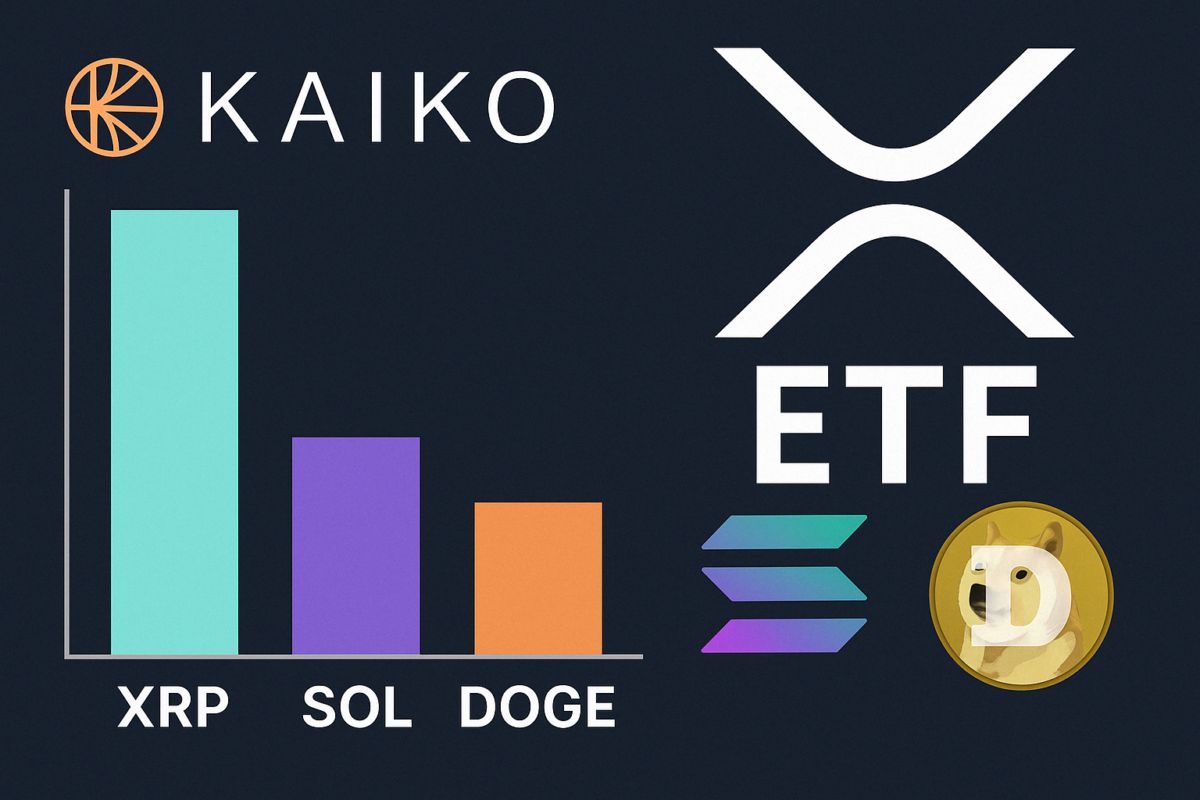Cross-Chain Interoperability Solutions Are Fueling the Growth of Crypto’s Next-Gen Exchanges
With the crypto ecosystem now worth trillions of dollars , the need for different blockchain entities to be able to interact with one another has never been higher. As a result, many cross-chain interoperability solutions have gained traction over the last couple of years, enabling different networks to share their data, assets, and functionalities without compromising their individual characteristics.
From a purely financial standpoint, the blockchain interoperability market is set to experience explosive growth over the coming decade, reaching a valuation of $3 billion by 2034 (a 1,400% surge from its 2023 valuation of $200 million).
At the helm of this burgeoning space are many protocols, including Polkadot, Cosmos, Chainlink’s CCIP, Ren, ThorChain, and LayerZero, amongst others.
Polkadot, in particular, stands out thanks to its innovative multi-chain network architecture , utilizing a central Relay Chain to coordinate consensus and enable communication between its parachains while sharing security across the network.
As part of a June 2024 report , the project released a comprehensive treasury report detailing its financial status, which included assets worth approximately $245 million.
Other similar projects include the Cosmos Network. Through its Inter-Blockchain Communication (IBC) protocol — which leverages the power of the Tendermint consensus algorithm and Cosmos’s native SDK stack — it has created an ecosystem of sovereign blockchains that can freely interact and exchange data.
Lastly, Chainlink’s Cross-Chain Interoperability Protocol (CCIP) is pioneering a universal standard for cross-chain communication and token transfers, using its decentralized oracle networks to ensure secure and reliable data transmission between different blockchains.
The rise of hybrid exchanges
In addition to facilitating basic data communication activities, cross-chain interoperability protocols have had another major impact on the crypto landscape. They have powered a new breed of exchanges that are hybrid in nature — combining the power of DEXs and CEXs — thereby creating a more unified and efficient trading environment.
To elaborate, hybrid exchanges represent a wholly revamped approach to trading. By leveraging cross-chain interoperability solutions, these platforms can facilitate trading across multiple blockchains while maintaining the security benefits of decentralized systems and the efficiency of centralized operations.
Architecturally speaking, such a design ensures that traders have 24/7 access to access multiple liquidity pools across different chains while maintaining control over their assets (via self-custody solutions).
One example of such an offering is GRVT . Since its inception in 2022, it has positioned itself as a pioneer in the hybrid exchange space. It offers an impressive throughput of 600,000 transactions per second thanks to its innovative off-chain order matching and on-chain settlement system.
Moreover, the platform’s use of ZK (zero-knowledge) technology adds an additional layer of privacy and security, allowing users to keep their trading data private through zkSync’s Validium technology.
For institutional clients, GRVT offers sophisticated features such as role-based access control, allowing organizations to manage multiple private keys with unique access permissions for a single sub-account.
The growing demand for transparent trading solutions is imminent
Following the downfall of several prominent centralized crypto trading entities like Celsius and FTX a couple of years ago, the market seems to be increasingly tilting toward the use of hybrid exchanges.
For instance, a market poll conducted by Grayscale — that surveyed 1,759 potential voters — revealed a significant appetite for greater transparency in cryptocurrency operations, with a vast majority of the respondents expressing strong support for decentralized finance solutions as alternatives to traditional financial systems.
This shift in user preferences reflects a broader understanding that while CEXs have dominated the crypto trading landscape, their lack of transparency, single points of failure, and complete centralization of control no longer align with the evolving needs of the market.
Similarly, while decentralized exchanges (DEXs) offer greater transparency, they often struggle with limited liquidity, slower transaction speeds, and complex user interfaces that can deter mainstream adoption.
In this context, hybrid exchanges like GRVT, which balance user-friendly interfaces and decentralized security features, are well-positioned to capture this growing segment of users who want the best of both worlds. Interesting times ahead!
Disclaimer: The content of this article solely reflects the author's opinion and does not represent the platform in any capacity. This article is not intended to serve as a reference for making investment decisions.
You may also like
XRP Gains Edge in ETF Race Over SOL and DOGE, Says Kaiko

Strive Pushes Intuit to Add Bitcoin to Treasury
Strive urges Intuit to hold Bitcoin in its treasury to hedge against AI-driven disruption risks.Bitcoin as a Hedge Against AI Disruption?Why Bitcoin, and Why Now?BTC in the Boardroom

JP Morgan Predicts Imminent Interest Rate Cuts
JP Morgan forecasts upcoming rate cuts, signaling a major shift in U.S. economic policy that could impact markets and crypto alike.JP Morgan Signals Upcoming Interest Rate CutsWhy Rate Cuts Matter for MarketsCrypto Could See Renewed Interest

Raydium launches Launch Lab, a token issuance platform